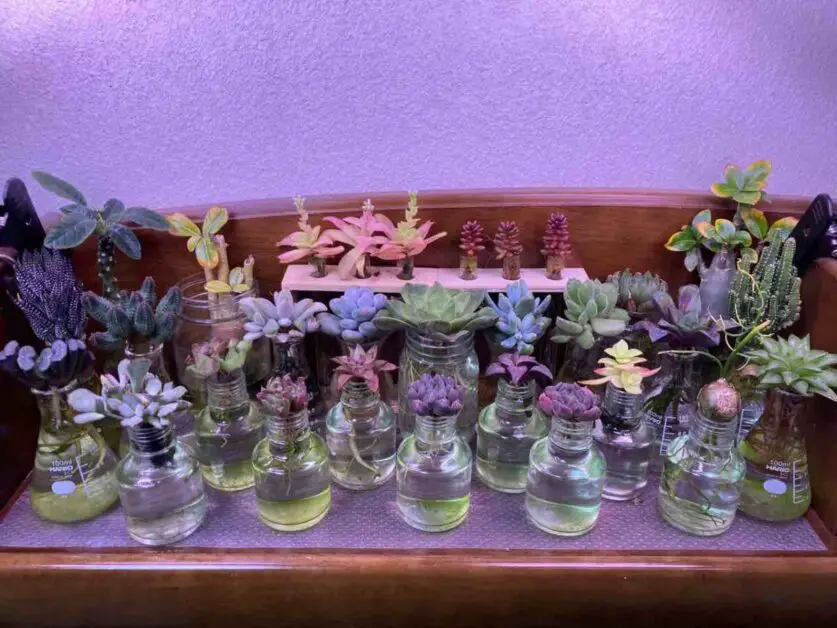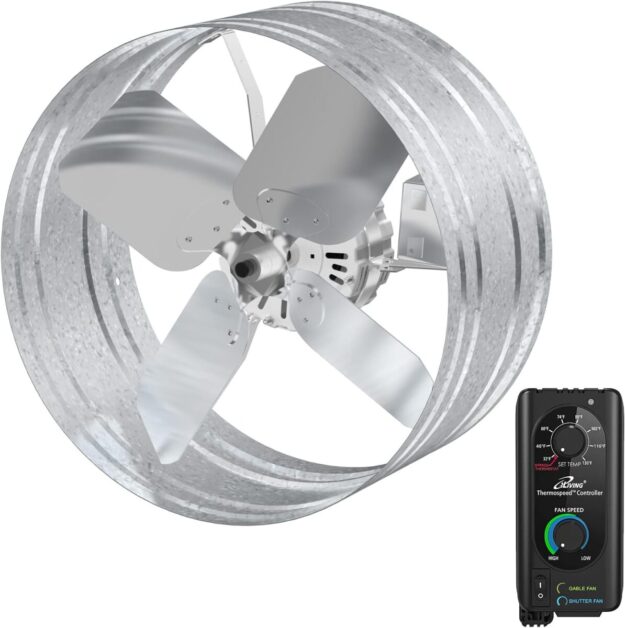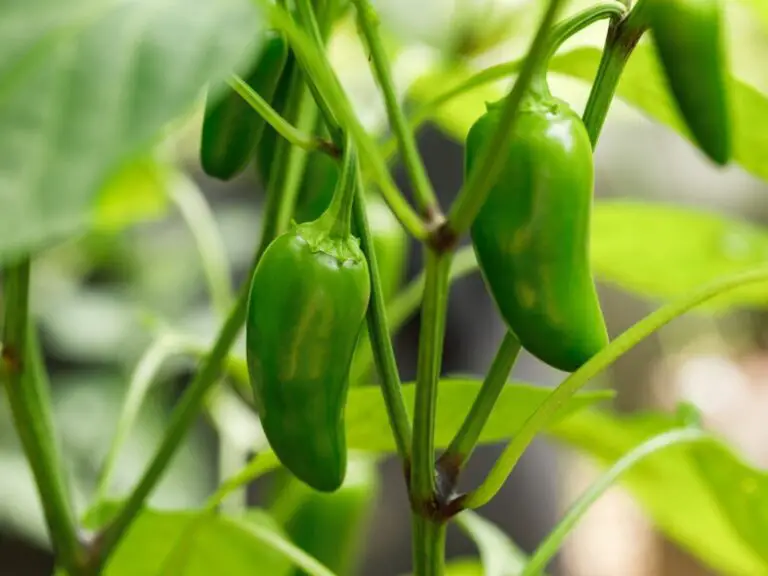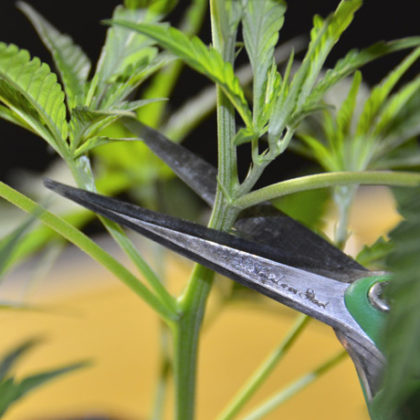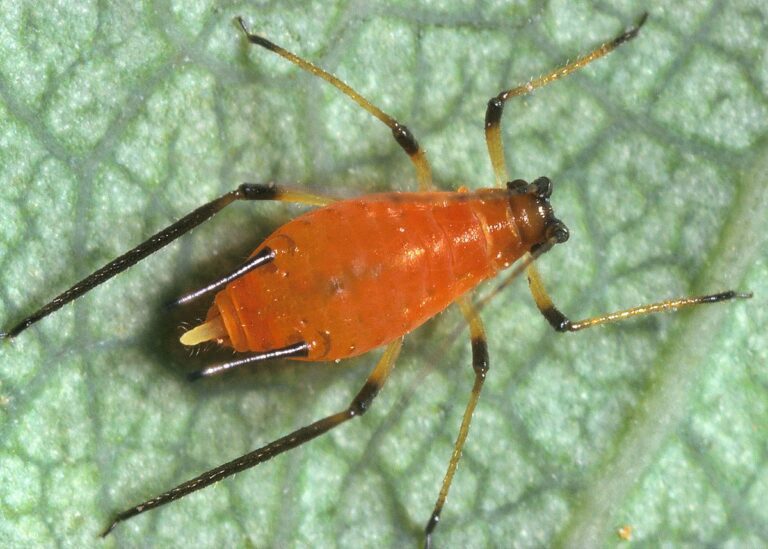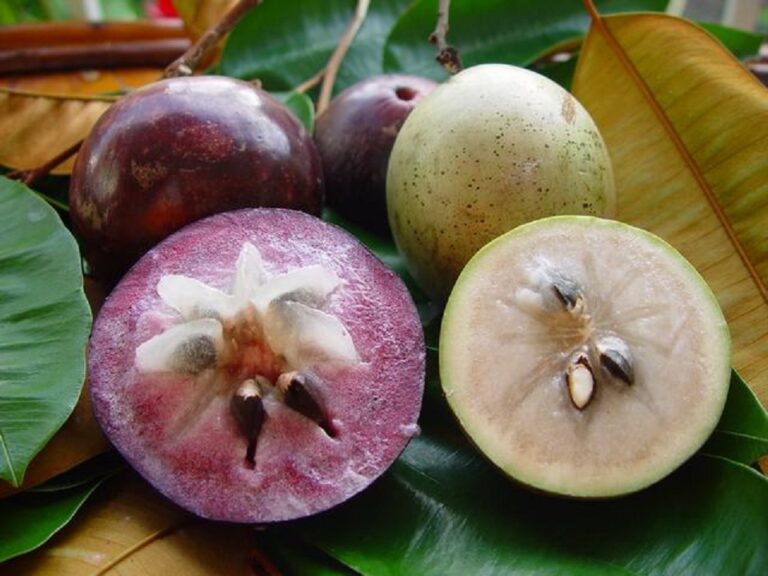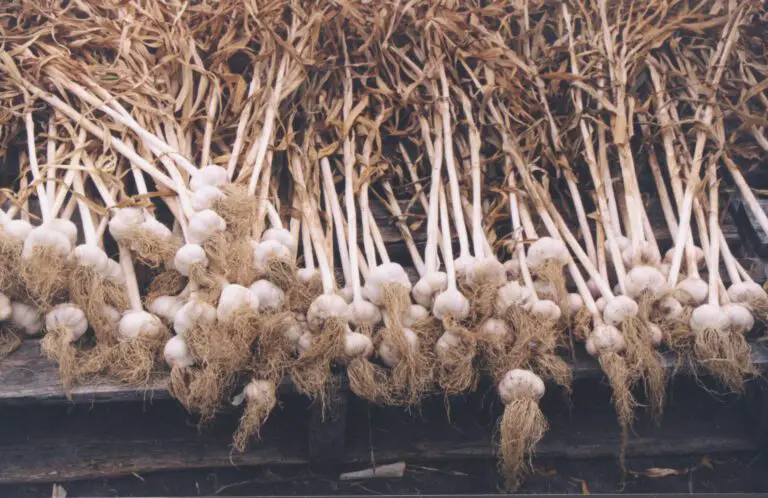How to Grow Succulents Hydroponically Anywhere: A Simple Guide
Looking to add some greenery to your space without the hassle of soil? Enter hydroponic succulents – the perfect solution for busy plant lovers everywhere. Did you know you can grow these resilient beauties without soil, using just water and nutrients? It’s true! Whether you’re a seasoned gardener or a newbie with a green thumb, growing succulents hydroponically is a breeze.
In this simple guide, we’ll walk you through the steps to grow succulents hydroponically anywhere, from your kitchen countertop to your office desk. Get ready to elevate your indoor gardening game and enjoy the beauty of succulents with minimal effort. Let’s dive in and cultivate some thriving succulent gardens, sans soil!
Table of Contents
Hydroponic System Basics
As gardening enthusiasts seek alternative methods to grow plants, hydroponic systems have emerged as a popular choice due to their efficiency and versatility.
- Hydroponics is a soil-less gardening technique that utilizes water and nutrient solutions to cultivate plants.
- By providing plants with all the essential elements they need in a controlled environment, hydroponic systems can promote faster and healthier growth.
- One of the key advantages of hydroponics is its ability to conserve water.
- Traditional gardening methods often lead to water wastage through evaporation or inefficient soil absorption.
- In contrast, a hydroponic system recirculates the nutrient solution, minimizing water loss and maximizing its usage.
- This not only benefits the environment but also makes hydroponics a viable option in areas with limited water resources.
- In addition, hydroponic systems allow plants to absorb nutrients more effectively, leading to increased nutrient uptake and higher crop yields.
“Basic Hydroponic Systems: Types and How to Choose” has been an invaluable resource in my journey into hydroponic gardening. Its straightforward explanations and practical advice have demystified the complexities of hydroponic systems, making it accessible to beginners like myself. From understanding the different types of hydroponic setups to selecting the right system for my plants, this book has provided clear guidance every step of the way. The illustrations and diagrams have enhanced my understanding, allowing me to visualize and implement various hydroponic techniques with confidence.
However, I wished for a bit more depth in certain areas, as some topics felt glossed over. Additionally, while the book offers a solid foundation in hydroponic principles, it may not satisfy the needs of more experienced growers seeking advanced techniques. Nevertheless, “Basic Hydroponic Systems” remains a valuable starting point for anyone looking to venture into hydroponic gardening, offering a wealth of knowledge in a concise and accessible format.
- Comprehensive Guide: The book provides a comprehensive overview of various hydroponic systems, making it suitable for beginners and experienced hydroponic gardeners alike.
- Educational Content: It offers educational content on the fundamentals of hydroponics, including system types, components, and maintenance, empowering readers with essential knowledge for successful hydroponic gardening.
- Practical Advice: The book includes practical advice on choosing the right hydroponic system for different plants and growing environments, helping readers make informed decisions based on their specific needs and preferences.
- Clear Explanations: Complex concepts are explained in a clear and concise manner, making the information accessible and easy to understand for readers of all skill levels.
- Illustrations and Diagrams: The inclusion of illustrations and diagrams enhances comprehension, allowing readers to visualize hydroponic setups and concepts more effectively.
- Troubleshooting Tips: Practical tips and troubleshooting advice are provided to help readers identify and address common issues that may arise during hydroponic gardening, ensuring smoother and more successful cultivation experiences.
- Inspiring Examples: The book may feature inspiring examples or case studies of successful hydroponic gardens, motivating readers and providing practical insights into real-world applications of hydroponic systems.
- Affordability: Depending on the price, the book may offer excellent value for the wealth of information it provides, making it a worthwhile investment for anyone interested in hydroponic gardening.
- Limited Depth: Some readers may find that certain topics are covered superficially, lacking in-depth information or advanced techniques.
- Limited Scope: The book may focus primarily on basic hydroponic systems, omitting more advanced or specialized techniques that experienced gardeners may be interested in exploring.
- Generalization: Due to the broad scope of hydroponic gardening, the book may generalize certain concepts or recommendations, which may not apply universally to all plants or growing environments.
- Technical Jargon: While efforts are made to simplify technical terms, some readers may still find the presence of technical jargon confusing or intimidating, especially if they are new to hydroponic gardening.
- Lack of Updates: Depending on the publication date, the book may not include the latest advancements or innovations in hydroponic technology, potentially rendering some information outdated or less relevant.
- One-size-fits-all Approach: The book may advocate for certain hydroponic systems or methods without considering the unique requirements or constraints of individual growers, leading to potential mismatches between recommendations and readers’ circumstances.
Choosing the Right Lighting
When it comes to creating the ideal environment for your hydroponic system, choosing the right lighting is essential. Adequate lighting is crucial for the growth and development of your succulents, as it serves as their primary source of energy through photosynthesis. But with so many options available, how do you know which lighting is best suited for your hydroponic setup?
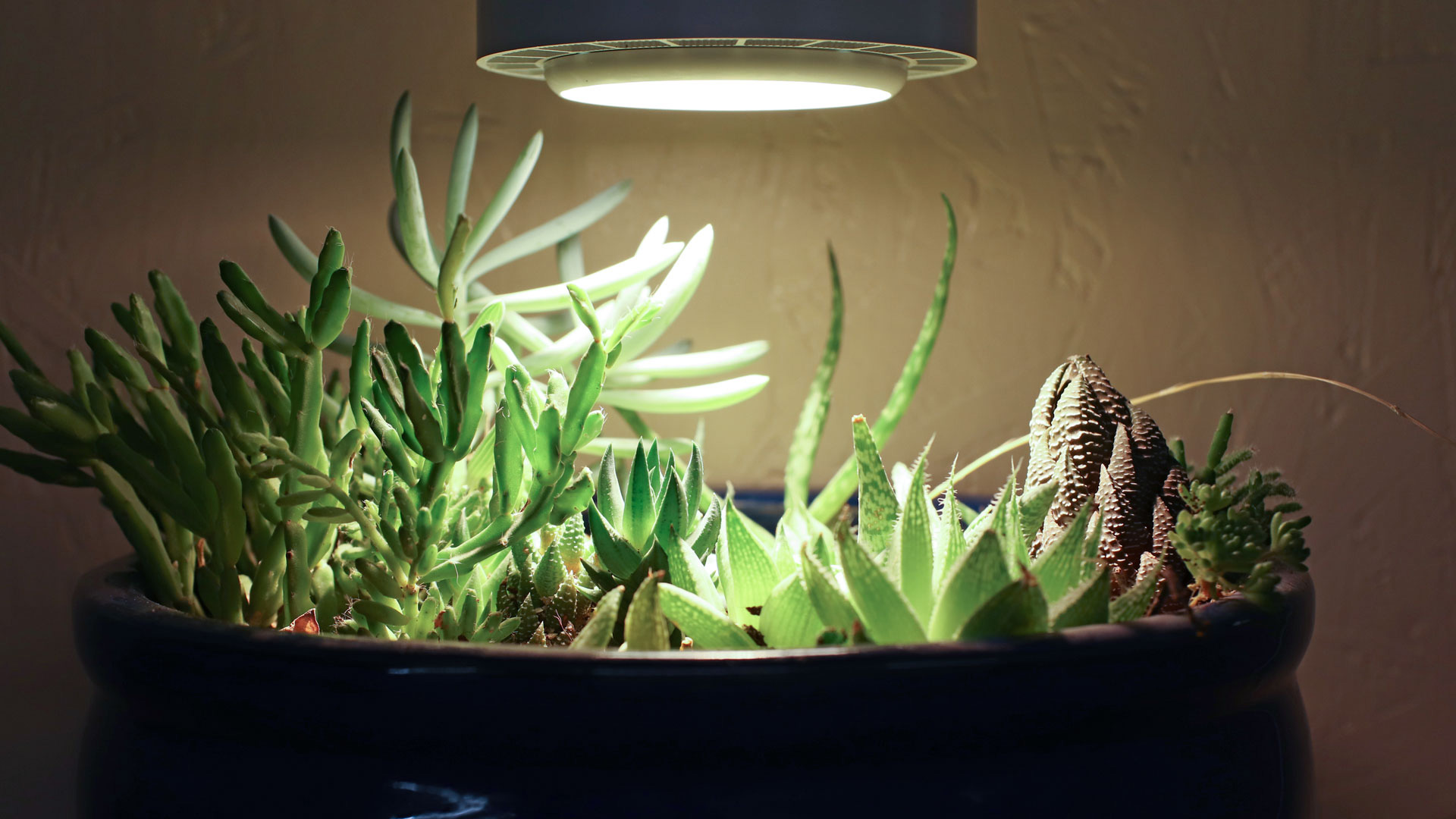
- Understanding Light Spectrum: Different stages of plant growth require different types of lighting. Blue spectrum lights are ideal for the vegetative stage, promoting healthy leaf development, while red spectrum lights are necessary for the flowering stage, encouraging flower and fruit production.
- Consider Intensity and Duration: Succulents need 12-16 hours of light per day to thrive. Choose a lighting system with sufficient intensity to meet your plants’ needs. HID lights like metal halide or high-pressure sodium bulbs are popular for their strong lighting, while LEDs offer energy efficiency.
- Monitoring Light Distance: Keep an eye on the distance between the lights and your plants, as succulents can be sensitive to light intensity and proximity. Adjust as needed to ensure optimal growth and health.
Selecting the Ideal Container
When it comes to hydroponic gardening, selecting the ideal container is an essential aspect of ensuring the success of your plants. The container you choose will directly impact the growth and development of your succulents. There are several factors to consider when selecting the right container, including size, material, and drainage.

- Container Size Matters: Choose a container that provides enough space for the roots to grow and expand. Too small of a container can stunt growth, while too large can lead to water retention and root rot. Opt for a container proportional to the plant’s size to ensure proper root development.
- Consider Material: Plastic, ceramic, and fabric pots each have their pros and cons. Plastic is lightweight and affordable but may lack adequate drainage. Ceramic pots are elegant and durable but can be heavy and less efficient at retaining moisture. Fabric pots offer excellent drainage and air circulation but may dry out quickly.
- Don’t Forget Drainage: Proper drainage is essential to prevent root rot. Choose a container with drainage holes to allow excess water to escape. If your container lacks holes, create them yourself or use gravel to facilitate drainage.
In conclusion, selecting the ideal container for your hydroponic succulents is a crucial step in ensuring their health and growth. By considering factors such as size, material, and drainage, you can provide your plants with the best possible environment to thrive.
Picking the Best Substrate
When it comes to hydroponic gardening, choosing the best substrate is crucial for the success of your plants. The substrate, also known as the growing medium, serves as a support system for the roots and provides them with the necessary nutrients and oxygen. There are several options available for hydroponic substrates, each with its own advantages and considerations.
:max_bytes(150000):strip_icc()/how-use-succulents-annuals-outdoor-gardens-4862944_17-43d7c2468147470bbee9ec93e5b5cd45.jpg)
coco coir
One popular substrate choice is coco coir, which is derived from the husk of coconuts. Coco coir is known for its excellent water retention and aeration properties. It has a neutral pH and is resistant to pests and diseases, making it a great choice for hydroponic systems. Another option is perlite, a lightweight volcanic glass that provides good drainage and aeration. Perlite is inert and does not retain water, so it is ideal for plants that prefer a drier environment.
Rockwool
Rockwool is another commonly used substrate in hydroponics. Made from melted basalt rock and spun into fibers, rockwool is lightweight and provides good water retention and air circulation. It is also sterile and resistant to fungal diseases. However, it is important to note that rockwool has a high pH initially, so it needs to be soaked and rinsed before use. Clay pebbles, also known as expanded clay or hydroton, are another option for hydroponic substrates. These inert clay balls have excellent drainage and aeration properties, allowing roots to breathe and access nutrients effectively.
When selecting the best substrate for your hydroponic system, consider the specific needs of your plants and the type of hydroponic system you are using. Each substrate has its own set of advantages and considerations, so it’s important to choose one that will provide optimal growing conditions for your succulents. By considering factors such as water retention, aeration, pH levels, and disease resistance, you can ensure that your plants thrive in your hydroponic setup.
Understanding Watering Techniques
One of the most critical aspects of successful hydroponic gardening is understanding proper watering techniques. Unlike traditional soil gardening, where water is absorbed through the roots, hydroponic systems require a more precise approach to ensure optimal nutrient uptake and plant growth.
- The first step in mastering watering techniques is to understand the needs of your specific plants.
- Different types of plants have varying water requirements, and it’s essential to research and identify these needs before getting started.
- Factors such as the stage of growth, temperature, humidity, and light intensity can also influence the amount and frequency of watering.
- By taking these factors into account, you can tailor your watering routine to meet the specific needs of your plants and provide them with the right amount of moisture for healthy growth.
Providing Proper Nutrient Solutions
To ensure the healthy growth of your succulents in a hydroponic system, providing proper nutrient solutions is crucial. Succulents have specific nutritional requirements that must be met in order for them to thrive. These plants are known for their ability to store water in their leaves, stems, and roots, which allows them to survive in arid conditions. However, this adaptation also means that they require a different nutrient balance compared to other plants.
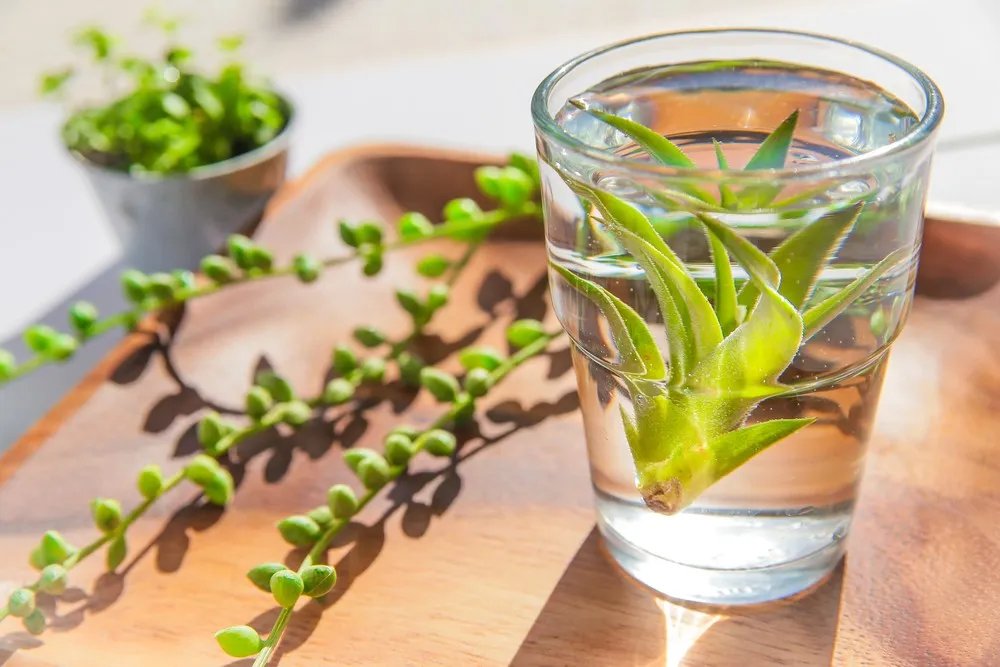
- Nitrogen (N):
- Importance: Nitrogen is crucial for succulent growth. It forms part of proteins, nucleic acids, enzymes, amino acids, and chlorophyll.
- Function: Supports overall plant development.
- Symptoms of Deficiency: Stunted growth, yellowing leaves.
- Application: Use a nitrogen-containing fertilizer sparingly, as succulents prefer low nitrogen levels.
- Phosphorus (P):
- Importance: Phosphorus is essential for root development, flowering, and fruiting.
- Function: Promotes strong roots and reproductive processes.
- Symptoms of Deficiency: Poor flowering, weak roots.
- Application: Choose a balanced fertilizer with adequate phosphorus content.
- Potassium (K):
- Importance: Potassium helps succulents withstand environmental stressors like extreme temperatures and drought.
- Function: Enhances overall plant health and resilience.
- Symptoms of Deficiency: Leaf edges turning brown, reduced vigor.
- Application: Opt for a potassium-rich fertilizer.
- Micronutrients:
- Iron (Fe): Essential for chlorophyll production.
- Magnesium (Mg): Aids in photosynthesis.
- Zinc (Zn): Supports enzyme function.
- Boron (B), Molybdenum (Mo), and Sulfur (S): Required in small amounts.
- Application: Use a complete micronutrient blend or supplement as needed.
Remember to:
- Monitor Soil: Regularly check your succulent’s soil for nutrient deficiencies.
- Adjust pH: Maintain slightly acidic conditions (lower pH) for optimal nutrient uptake.
- Avoid Over-Fertilization: Succulents can become leggy if over-fertilized.
- Consider Natural Solutions: Fish emulsion and compost teas are beneficial alternatives.
It is essential to monitor the nutrient solution regularly and make adjustments as needed to maintain the proper nutrient balance for your succulents. With the right nutrient solutions, your succulents will flourish and bring joy to your indoor or outdoor space.
Maintaining Optimal Temperature and Humidity
Maintaining optimal temperature and humidity levels is crucial for the success of your hydroponic system.
- Temperature Management: Most plants thrive in temperatures between 65-75°F (18-24°C), but optimal temperatures may vary during different growth stages. For instance, seed germination requires slightly higher temperatures, while flowering and fruiting stages may benefit from cooler temperatures.
- Humidity Control: Humidity levels in hydroponic systems affect water evaporation and transpiration rates. High humidity can lead to fungal diseases, while low humidity can cause plant stress. Aim for humidity levels between 50-70% to maintain plant health.
- Regulation Techniques: Utilize equipment like fans, heaters, air conditioners, and dehumidifiers to regulate temperature and humidity. Invest in quality thermometers and hygrometers for accurate monitoring. Research specific temperature and humidity requirements for different plants to ensure optimal growth.
Remember that different plants may have specific temperature and humidity requirements, so make sure to research and adjust accordingly for optimal growth and health.
Ensuring Sufficient Air Circulation
Sufficient air circulation is an essential aspect of maintaining a healthy hydroponic system. Proper airflow not only ensures a continuous supply of fresh oxygen to your plants but also aids in the regulation of temperature and humidity. Without adequate air movement, stagnant conditions can promote the growth of harmful pathogens and restrict the absorption of nutrients by plant roots. Therefore, it is crucial to implement strategies to ensure optimal airflow in your hydroponic setup.
Remember, maintaining sufficient air circulation is crucial for the overall health and productivity of your hydroponic system. With proper airflow, you can prevent the onset of plant diseases, optimize nutrient absorption, and ensure the efficient exchange of gases. By incorporating strategies such as using fans and implementing an intake and exhaust system, you can create an environment that simulates natural airflow and promotes the success of your hydroponic garden.
The “Variable Thermostat Exhaust Fan for Greenhouse” has been a game-changer in maintaining optimal conditions within my greenhouse. Its variable speed settings and thermostat functionality ensure precise control over airflow and temperature, creating an environment conducive to healthy plant growth. I’ve noticed a significant improvement in air circulation, which has helped prevent issues like mold, mildew, and pests, ultimately leading to healthier plants and better yields. Installation was relatively straightforward, and despite its powerful performance, the fan operates quietly, minimizing disruptions in the greenhouse environment.
However, I did encounter some challenges with the fan’s complexity, particularly in understanding and programming the variable speed and thermostat settings. Additionally, ensuring a suitable power source and sufficient space for installation were minor logistical hurdles. Despite these drawbacks, the benefits far outweigh the drawbacks, making the “Variable Thermostat Exhaust Fan for Greenhouse” an essential investment for any greenhouse owner looking to optimize their growing conditions and maximize their plant’s potential.
✅ Thermostat Functionality: Equipped with a thermostat, the fan can automatically adjust its speed based on temperature, ensuring optimal climate regulation for plant health.
✅ Energy Efficiency: The variable speed and thermostat features contribute to energy efficiency, reducing power consumption and operating costs over time.
✅ Wide Coverage: With its large coverage area, the fan can effectively circulate air and maintain consistent temperatures throughout the greenhouse, promoting even plant growth.
✅ Durable Construction: Built with quality materials, the fan is durable and designed to withstand the rigors of greenhouse environments, providing reliable performance season after season.
✅ Easy Installation: The fan is relatively easy to install, with straightforward instructions and mounting hardware included, minimizing setup time and effort.
✅ Quiet Operation: Despite its powerful airflow, the fan operates quietly, minimizing noise disturbances in the greenhouse environment.
✅ Improves Plant Health: Proper ventilation provided by the exhaust fan helps prevent issues such as mold, mildew, and pests, promoting healthier plants and better yields.
✅ Versatile Use: While designed for greenhouse applications, the fan can also be used in other indoor or enclosed spaces that require ventilation and temperature control.
❌ Complexity: The variable speed and thermostat functions add complexity to the fan’s operation, requiring users to familiarize themselves with the settings and programming for optimal performance.
❌ Space Requirements: Due to its size and coverage area, the fan may require sufficient space for installation, limiting its suitability for smaller or compact greenhouse setups.
❌ Power Source: Depending on the greenhouse layout, accessing a suitable power source for the fan may pose logistical challenges, requiring additional wiring or extension cords.
❌ Maintenance Needs: Like any mechanical equipment, the fan requires regular maintenance to ensure continued functionality, including cleaning and occasional lubrication of moving parts.
❌ Compatibility: The fan’s compatibility with existing greenhouse infrastructure, such as venting systems or control panels, may vary, potentially necessitating additional modifications or accessories for seamless integration.
❌ Weather Resistance: While designed for greenhouse use, the fan’s weather resistance may vary depending on the specific model and construction materials, requiring protection from direct exposure to moisture or harsh weather conditions.
Preventing Pest Infestations
Keeping your hydroponic system free from pest infestations is essential for maintaining healthy and thriving succulents. These pests can not only damage your plants but also disrupt the delicate balance of your hydroponic setup. Fortunately, there are several preventive measures you can take to minimize the risk of pest infestations.

proper hygiene
Firstly, maintaining proper hygiene is crucial. Regularly clean and sanitize your hydroponic system to eliminate any potential breeding grounds for pests. This includes removing dead plant matter, cleaning out debris from containers, and disinfecting tools and equipment. Additionally, avoid introducing pests into your system by using sterilized substrates and ensuring that any new plants or materials are pest-free.
physical barrier
Secondly, creating a physical barrier can help prevent pests from entering your hydroponic system. Use mesh screens or nets to cover openings and vents, preventing insects from gaining access to your plants. Additionally, consider using sticky traps or insect-proofing covers over your containers to catch or repel pests.
By implementing these preventive measures, you can significantly reduce the risk of pest infestations in your hydroponic system. However, if you do notice any signs of pests, promptly isolate and treat affected plants to prevent the infestation from spreading. Stay vigilant and consistently monitor your plants to ensure a pest-free hydroponic environment.
Managing pH Levels
Maintaining the proper pH levels in a hydroponic system is crucial for the health and growth of your plants. pH, which stands for “potential of hydrogen,” is a measure of the acidity or alkalinity of a solution. The pH scale ranges from 0 to 14, with 7 being neutral. Most plants prefer slightly acidic to neutral conditions, with a pH range of 5.5 to 6.5.
- To manage pH levels effectively, it is essential to regularly monitor the pH of your nutrient solution.
- This can be done using a pH meter or test strips specifically designed for hydroponic systems.
- Testing the pH should be done at least once a day to ensure that any fluctuations are promptly addressed.
- If the pH is too high, indicating alkalinity, you can lower it by adding acidic substances such as phosphoric acid or nitric acid.
- On the other hand, if the pH is too low, indicating acidity, you can raise it by incorporating alkaline substances like potassium hydroxide or calcium carbonate.
- Striving to maintain the appropriate pH range will promote optimal nutrient availability, nutrient uptake, and overall plant health in your hydroponic garden.
Monitoring and Adjusting EC Levels
Maintaining appropriate nutrient levels is crucial for the successful growth of your hydroponic plants. Monitoring and adjusting your EC (electrical conductivity) levels can help ensure that your plants receive the right amount of nutrients at all times.
By diligently monitoring and adjusting the EC levels in your hydroponic system, you can provide your plants with the optimal nutrient environment for healthy growth. This proactive approach will help you avoid issues such as nutrient deficiencies or toxicities, enabling you to grow robust and vibrant plants in your hydroponic setup.
Implementing a Feeding Schedule
Implementing a feeding schedule is crucial to ensuring the healthy growth and development of your succulents in a hydroponic system. By providing your plants with a consistent and balanced supply of nutrients, you can optimize their overall health and maximize their yield.

- Germination Stage:
- Germination: Succulent seeds sprout and develop into young plants.
- Care Tips:
- Planting: Handle small, delicate seeds with care. Sprinkle them lightly on well-draining soil without burying them too deep.
- Watering: Use a spray bottle or misting nozzle to moisten the soil gently. Maintain consistent moisture levels.
- Light: Provide bright but indirect light near a window.
- Patience: Germination duration varies by species.
- Seedling Stage:
- Seedlings: Develop characteristic succulent leaves and establish root systems.
- Care Tips:
- Transplanting: When seedlings have true leaves, transplant them into individual pots or larger containers with well-draining soil.
- Watering: Water sparingly but regularly, allowing the top inch of soil to dry out between waterings.
- Light: Place seedlings in bright, indirect light or use supplemental grow lights.
- Protection: Shield young succulents from extreme temperatures, pests, and diseases.
- Nutrient Requirements:
- Macronutrients (NPK):
- Nitrogen (N): Essential for growth.
- Phosphorus (P): Promotes root development, flowering, and fruiting.
- Potassium (K): Enhances resilience.
- Micronutrients: Iron (Fe), magnesium (Mg), zinc (Zn), and others.
- Application:
- Balanced Fertilizer: Opt for a well-balanced fertilizer with a 1-1-1 or 2-1-1 (N-P-K) ratio.
- Frequency: Apply at half strength every 2 to 4 weeks during the growing season (spring and summer).
- Macronutrients (NPK):
- Fertilizing Frequency:
- Indoor Succulents: Fertilize once per year.
- Outdoor Container Succulents: Consider an extra session or two during warmer seasons.
Remember, consistency is key when it comes to implementing a feeding schedule. Stick to your predetermined schedule and closely monitor your plants for any signs of nutrient deficiencies or excesses. Adjustments may be necessary as your succulents grow and their nutrient requirements change. By carefully observing and adjusting your feeding schedule, you can ensure the continued health and vitality of your hydroponic succulents.
Pruning and Propagating Succulents
Pruning is an essential practice when it comes to maintaining healthy and attractive succulents. By removing dead or damaged leaves, stems, or branches, you not only improve the overall appearance of the plant but also promote its overall health and growth. When pruning succulents, it is important to use clean and sterile tools to avoid the spread of diseases. Additionally, it is best to prune during the active growing season, as this is when the plants have the greatest ability to heal and recover.
- Leaf Cuttings:
- Process: Gently remove a healthy leaf from the parent succulent. Allow the cut end to callus (dry out) for a day or two.
- Planting: Place the callused end of the leaf on well-draining soil or directly on top of the soil surface.
- Root Formation: Over time, roots will emerge from the base of the leaf, and a new plantlet will grow.
- Species Variation: Some succulents, like echeverias, propagate well from leaf cuttings.
- Patience: Leaf propagation can take several weeks to months.
- Stem Cuttings:
- Method: Cut a healthy stem (with leaves attached) from the parent plant.
- Rooting: Allow the cut end to callus, then insert it into well-draining soil or water.
- Root Development: Roots will form at the cut end, and a new plant will grow from the stem.
- Variety: Many succulents, such as sedums and crassulas, can be propagated using stem cuttings.
- Light and Water: Provide bright light and minimal water during the rooting process.
- Division:
- Process: Divide a mature succulent plant into smaller sections, each with its own roots.
- When: Division is best done when the plant has outgrown its container or becomes crowded.
- Care: Ensure that each divided section has roots intact.
- Species: Agave, aloe, and some cacti respond well to division.
- Recovery: Allow the divided sections to recover before repotting.
- Conditions for Success:
- Moisture: Avoid overwatering during propagation. Succulents prefer drier conditions.
- Temperature: Keep the environment warm (around 70-75°F or 21-24°C).
- Indirect Light: Provide bright but indirect sunlight.
- Patience: Propagation takes time; be patient and observe the progress.
Remember, each succulent species may have specific requirements, so adapt your approach accordingly. Enjoy propagating and expanding your succulent collection! 🌱🌿By following proper techniques, using clean tools, providing suitable conditions, you can enjoy a thriving collection of beautiful succulents.
Recognizing Common Plant Diseases
Some common plant diseases can wreak havoc on your hydroponic system if left unchecked. Plant diseases are caused by various pathogens including bacteria, fungi, viruses, and nematodes. Early detection and prompt treatment are crucial for preventing the spread and minimizing the impact of these diseases.
powdery mildew
One common disease that affects plants in hydroponic systems is powdery mildew. This fungal disease appears as a dusty white coating on the leaves, stems, and flowers of infected plants. It can spread rapidly, especially in high humidity conditions. To prevent powdery mildew from taking hold in your hydroponic system, it is important to maintain proper air circulation and humidity levels.
Regularly inspect your plants for signs of powdery mildew and take immediate action if you detect any symptoms. Treatments for powdery mildew include organic fungicides, such as neem oil or sulfur-based products, or cultural practices like pruning affected plant parts and improving air flow around the plants.
Troubleshooting Growth Issues
When it comes to hydroponic gardening, troubleshooting growth issues is a common concern for many enthusiasts. While this method of gardening offers numerous benefits, such as faster growth rates and higher yields, it is not without its challenges. If you find yourself faced with stunted growth, yellowing leaves, or other signs of distress in your plants, here are some key areas to investigate.
- Nutrient Balance: Ensure a balanced nutrient solution by monitoring levels of essential macronutrients like nitrogen, phosphorus, and potassium. Adjust pH within the optimal range to facilitate nutrient uptake. Don’t overlook micronutrients such as iron and calcium, as deficiencies can impact plant growth.
- Lighting Considerations: Evaluate your lighting setup to avoid issues like insufficient or excessive light. Adjust intensity, duration, and spectrum to match plant requirements. Fine-tune your lighting strategy to provide the ideal conditions for healthy growth and development.
Troubleshooting Growth Issues in Hydroponic Succulents
| Issue | Possible Causes | Solutions |
|---|---|---|
| 1. Root Rot | – Overwatering: Excessive moisture causing root rot. | – Adjust watering frequency, allowing the growing medium to dry out between waterings. |
| – Poor Drainage: Inadequate drainage in the hydroponic system. | – Improve drainage by using a well-draining growing medium and adjusting the system setup. | |
| – Fungal Infections: Pathogens thriving in overly moist conditions. | – Apply a suitable fungicide and ensure a clean and sterile hydroponic environment. | |
| 2. Stunted Growth | – Nutrient Deficiency: Insufficient nutrients for healthy growth. | – Adjust the nutrient solution to provide the necessary macro and micronutrients. |
| – Light Insufficiency: Inadequate light for photosynthesis. | – Increase light exposure, considering the specific light requirements of succulents. | |
| – Improper pH Levels: pH affecting nutrient availability. | – Monitor and adjust pH levels to the optimum range for succulent growth. | |
| 3. Yellowing Leaves | – Overwatering: Roots not getting enough oxygen, leading to yellowing. | – Reduce watering frequency and ensure proper aeration in the growing medium. |
| – Nutrient Imbalance: Imbalances affecting chlorophyll production. | – Adjust nutrient solution to address deficiencies or excesses. | |
| – Disease or Pest Infestation: Pathogens or pests causing damage. | – Treat diseases with appropriate fungicides and address pest issues promptly. | |
| 4. Edema or Swelling | – Overwatering: Cells absorbing excess water, causing swelling. | – Correct overwatering practices and provide well-aerated growing conditions. |
| – Inadequate Drainage: Poor drainage leading to water accumulation. | – Improve drainage to prevent waterlogged conditions. | |
| – High Humidity: Excessive humidity causing water absorption issues. | – Maintain moderate humidity levels in the growing environment. | |
| 5. Brown or Black Spots | – Fungal Infections: Fungi thriving in humid and wet conditions. | – Apply fungicides and ensure proper ventilation to reduce humidity. |
| – Bacterial Issues: Bacterial infections affecting plant tissues. | – Treat with suitable antibacterial solutions and maintain cleanliness. | |
| – Sunburn: Excessive exposure to intense light or direct sunlight. | – Gradually acclimate succulents to higher light levels and provide shade if needed. | |
| 6. Leggy Growth | – Insufficient Light: Stretching towards light sources due to low light levels. | – Increase light intensity and ensure succulents receive adequate light for compact growth. |
| – Overcrowding: Competition for light causing elongated growth. | – Space out succulents to allow each plant to receive sufficient light. | |
| – Nutrient Imbalances: Uneven nutrient distribution in the hydroponic system. | – Ensure a well-mixed and balanced nutrient solution for uniform nutrient uptake. |
Note: Regular monitoring, precise environmental control, and adjustments to nutrient solutions are crucial for troubleshooting and ensuring the healthy growth of succulents in a hydroponic system.
By examining these factors and making appropriate adjustments, you can troubleshoot and overcome growth issues in your hydroponic system. Remember, each plant species has unique requirements, so it’s vital to research the specific needs of your chosen plants and tailor your approach accordingly. In the next section, we will delve further into the importance of maintaining a suitable pH level for hydroponic success.
Harvesting and Enjoying Your Succulents
After months of careful nurturing, it is time to reap the rewards of your hydroponic succulent garden. Harvesting and enjoying your succulents can be an incredibly satisfying experience, knowing that you have successfully grown these beautiful plants from start to finish. But how do you know when the time is right to harvest? And what are the best practices for ensuring you get the most out of your succulent harvest?
- Timing is Key: Research the growth cycle of your specific succulent variety to determine the optimal harvest time. Look for signs like firmness and vibrant coloration to indicate readiness.
- Careful Harvesting: When harvesting, gently twist the stem near the base of the plant to cleanly detach it from the growing medium. Avoid excessive pulling or cutting to prevent damage.
- Quality Control: Inspect each succulent for any signs of damage or disease, and discard any unhealthy specimens. Only harvest and consume healthy, thriving plants for the best taste and safety.
- Enjoying Your Harvest: Once harvested, explore various culinary options for enjoying your succulents, such as adding them to salads, stir-fries, or infusing oils. Let your creativity shine as you savor the fresh flavors of your homegrown succulents.
Resources and Further Reading
Aquaponics and Hydroponics: A Comprehensive Guide by Sylvia Bernstein is a must-read resource for anyone interested in diving deeper into the world of hydroponic gardening. This book provides a comprehensive overview of hydroponics systems, nutrient solutions, and plant growth factors.
With practical tips and step-by-step instructions, Bernstein guides readers through the process of setting up and maintaining a successful hydroponic garden. Whether you are a beginner or an experienced gardener, this book will serve as an invaluable resource for honing your hydroponic skills.
The Complete Guide to Soilless Gardening by Tyler Baras
Another highly recommended resource for hydroponic enthusiasts is The Complete Guide to Soilless Gardening by Tyler Baras. This book delves into the science behind hydroponics and explores various hydroponic system types and designs. Baras provides in-depth information on selecting the ideal lighting, containers, substrates, and water management techniques for optimal plant growth. Additionally, he offers expert advice on preventing pest infestations, managing pH levels, and troubleshooting common growth issues. With its practical insights and comprehensive approach, this guide is a valuable resource for both beginners and seasoned hydroponic gardeners alike.
Watch video for more information:
FAQ
What is hydroponics?
Hydroponics is a method of growing plants without soil, using a nutrient-rich water solution instead.
What are the benefits of using hydroponic systems?
Hydroponic systems offer several benefits, including faster growth rates, higher yield, and the ability to grow plants in areas with limited space or poor soil quality.
How do I choose the right lighting for my hydroponic system?
When selecting lighting for your hydroponic system, consider the type of plants you are growing and their lighting requirements. LED grow lights are popular for their energy efficiency and customizable spectrums.
What type of container should I use for my hydroponic system?
The ideal container for a hydroponic system depends on the specific setup and plant type. Options include grow trays, buckets, or even PVC pipes.
What is the best substrate for a hydroponic system?
Commonly used substrates in hydroponic systems include perlite, vermiculite, coco coir, and rockwool. The choice depends on the plants being grown and their water retention needs.
How often should I water my hydroponic plants?
Watering frequency in hydroponics varies depending on factors such as the type of plants, the growth stage, and the environmental conditions. It is important to maintain a balance to prevent over or under watering.
How do I provide proper nutrient solutions for my hydroponic system?
Hydroponic nutrient solutions should contain a balance of essential nutrients required for plant growth. These solutions can be purchased commercially or mixed at home using specific ratios.
What temperature and humidity levels are optimal for hydroponic systems?
Ideal temperature and humidity levels vary depending on the plant species being grown. In general, most plants thrive in temperatures between 65-75°F (18-24°C) and humidity levels around 50-70%.
How can I ensure sufficient air circulation in my hydroponic system?
Proper air circulation can be achieved through the use of fans or ventilation systems in the growing area. This helps prevent the build-up of heat and humidity, and promotes healthy plant growth.
How can I prevent pest infestations in my hydroponic system?
Preventing pest infestations in hydroponic systems involves maintaining cleanliness, regularly inspecting plants for signs of pests, and implementing preventative measures such as introducing beneficial insects or using organic pest control methods.
How do I manage pH levels in my hydroponic system?
pH levels in hydroponic systems should be monitored regularly using a pH meter or testing kit. Adjustments can be made by adding pH-up or pH-down solutions to maintain the desired range for optimal nutrient uptake.
What are EC levels and why should I monitor and adjust them in my hydroponic system?
EC (electrical conductivity) levels indicate the concentration of dissolved salts in the nutrient solution. Monitoring and adjusting EC levels ensures that plants receive the appropriate amount of nutrients, avoiding nutrient deficiencies or toxicities.
Do I need to follow a feeding schedule for my hydroponic plants?
Yes, following a feeding schedule is important in hydroponics to provide plants with the necessary nutrients at each growth stage. This helps promote healthy growth and prevents nutrient imbalances.
How do I prune and propagate succulents in a hydroponic system?
Pruning succulents involves removing dead or overgrown leaves or stems, allowing the plant to focus its energy on healthy growth. Propagation can be done by taking stem or leaf cuttings and placing them in a suitable rooting medium until they develop roots.
What are some common plant diseases in hydroponic systems?
Common plant diseases in hydroponic systems include root rot, powdery mildew, and fungal infections. These can be prevented by maintaining proper hygiene, ensuring good air circulation, and using disease-resistant plant varieties.
How do I troubleshoot growth issues in my hydroponic system?
Troubleshooting growth issues in hydroponic systems involves identifying potential causes such as nutrient deficiencies, pH imbalances, or environmental factors. Adjustments can then be made accordingly.
When is the best time to harvest and enjoy my hydroponic succulents?
The best time to harvest and enjoy hydroponic succulents is when they have reached their desired size and maturity. This varies depending on the specific plant species and personal preference.
Where can I find additional resources and further reading on hydroponic systems?
Additional resources and further reading on hydroponic systems can be found in books, scientific journals, online forums, and websites dedicated to hydroponics. Consult the “Resources and Further Reading” section of this article for specific recommendations.

Studied Agricultural Engineering-Plant Protection at University of California, Davis.
Head of Content writing team at Southelmontehydroponics.com

